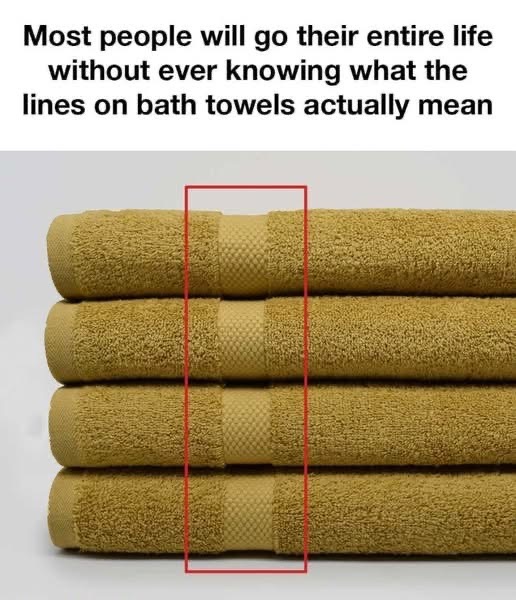When you grab a towel fresh out of the linen closet, have you ever noticed the subtle lines or bands stitched across it? They’re often slightly different in texture or thickness than the rest of the fabric. Maybe you assumed they were just decorative accents to make the towel look nicer. While they do add a touch of elegance, these mysterious lines actually serve a much more practical purpose — and once you learn it, you’ll never look at your towels the same way again.
It’s More Than Just Decoration
Most of us grew up using towels without giving them a second thought. We dry off, toss them in the laundry, and repeat. But if you take a closer look, you’ll notice that nearly all quality towels — especially bath towels — have those signature woven bands. Manufacturers didn’t just add them for aesthetic reasons.
These textured lines are called dobby borders, and they play a surprisingly important role. Their primary purpose is to prevent the towel from losing its shape over time.
Without the dobby borders, towels are more likely to stretch, distort, and become misshapen after repeated use and wash cycles. Think about how often you’ve seen older towels that look saggy, uneven, or twisted — that’s what the dobby border is designed to prevent.
How Dobby Borders Work
Towels are typically made from cotton loops, which are soft and highly absorbent but not very structurally strong. As you use and wash a towel, the constant pulling, twisting, and wringing can cause those loops to stretch out.
The dobby border, made with a tighter weave and different stitching, acts almost like a stabilizing belt. It reinforces the towel and keeps it from becoming distorted. The border offers a stronger, less flexible section that absorbs some of the tension during use and laundering, allowing the main fabric to stay intact and keep its original shape.
In simpler terms, the lines you see are a built-in feature designed to make your towel last longer and stay looking good.

Leave a Reply